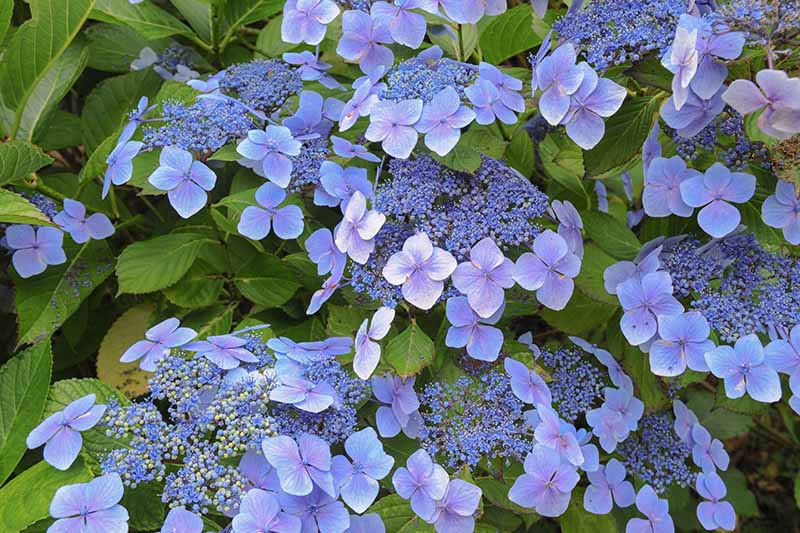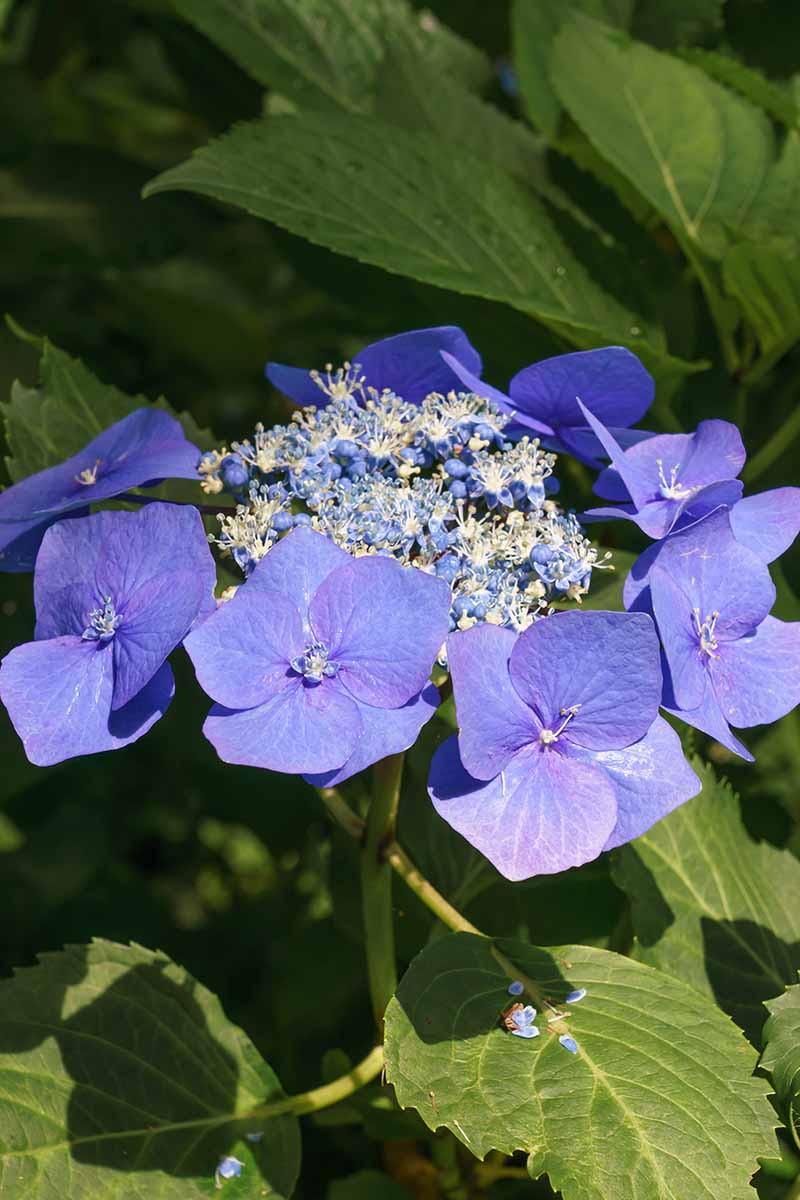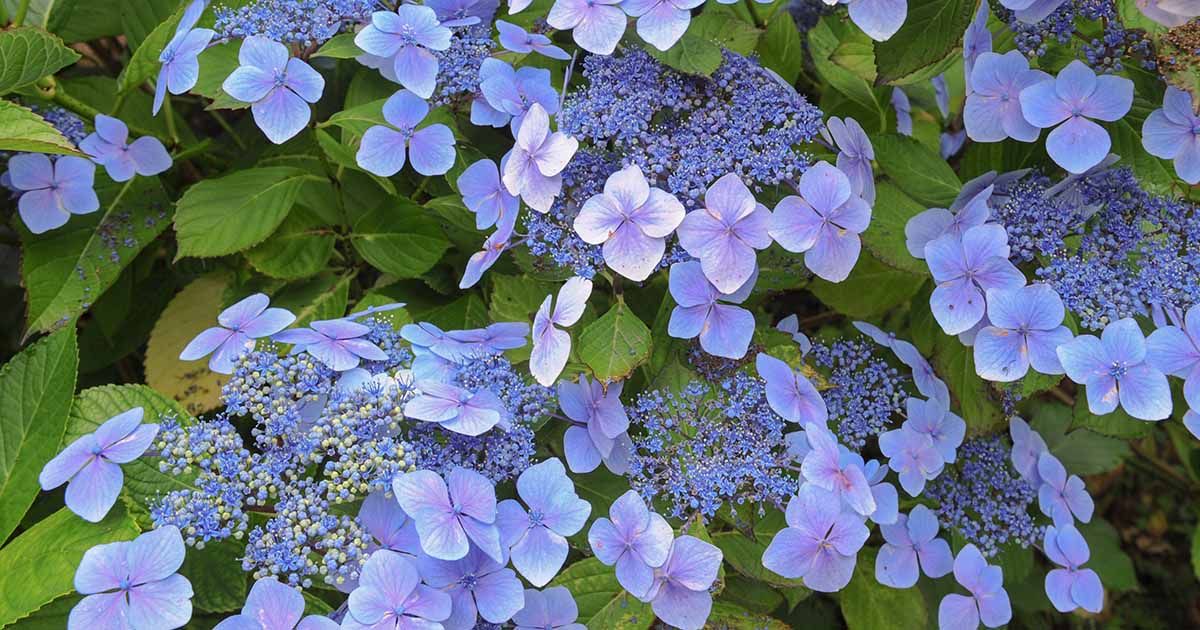Lace Leaf Hydrangea: The Delicate Beauty Of The Garden
Lace leaf hydrangeas are a beautiful and delicate addition to any garden. With their lacy, fern-like leaves and large, showy flowers, they are sure to turn heads. Lace leaf hydrangeas are relatively easy to care for, and they can thrive in a variety of climates.
In this blog post, we will discuss the following:
- The different types of lace leaf hydrangeas
- How to plant and care for lace leaf hydrangeas
- How to propagate lace leaf hydrangeas
- The folklore and symbolism of lace leaf hydrangeas
Let's get started!
Types of Lace Leaf Hydrangeas
There are several different types of lace leaf hydrangeas, each with its own unique characteristics. Some of the most popular types include:
- Annabelle: This is a hardy variety that is known for its large, white flowers. Annabelle lace leaf hydrangeas are relatively easy to care for and can tolerate a variety of soil conditions.

- Limelight: This variety is known for its bright lime green flowers that fade to pink as they age. Limelight lace leaf hydrangeas are a bit more sensitive to cold weather than Annabelle, but they are still relatively easy to care for.

- PeeGee: This variety is known for its large, pink flowers that have a sweet fragrance. PeeGee lace leaf hydrangeas are a bit more difficult to care for than Annabelle or Limelight, but they are still a beautiful addition to any garden.

- Serrata: This variety is known for its serrated leaves and small, blue flowers. Serrata lace leaf hydrangeas are a bit more cold-hardy than other types of lace leaf hydrangeas, but they are not as tolerant of full sun.

Planting and Caring for Lace Leaf Hydrangeas
Lace leaf hydrangeas are relatively easy to plant and care for. They prefer full sun to partial shade and moist, well-drained soil. Lace leaf hydrangeas should be planted in the spring or fall. When planting, dig a hole that is twice the size of the root ball. Backfill the hole with soil and water well.
Lace leaf hydrangeas should be fertilized once a year in the spring. Use a balanced fertilizer, such as 10-10-10. Lace leaf hydrangeas do not require a lot of pruning. However, you may want to remove dead or damaged branches in the spring.
Propagating Lace Leaf Hydrangeas
Lace leaf hydrangeas can be propagated by taking cuttings in the spring or summer. To take a cutting, choose a healthy stem that is about 6 inches long. Make a clean cut just below a node. Remove the lower leaves from the cutting and dip the end in rooting hormone. Plant the cutting in a pot filled with moist potting mix. Place the pot in a shady spot and keep the soil moist. The cutting should root in about 4-6 weeks.
Folklore and Symbolism of Lace Leaf Hydrangeas
Lace leaf hydrangeas have a long history of folklore and symbolism. In Japan, they are associated with heartfelt emotion, gratitude for understanding, and apology. This is due to a Japanese legend in which a Japanese emperor gave a lace leaf hydrangea to the family of the girl he loved to make up for neglecting her in favor of business.
In Western cultures, lace leaf hydrangeas are often associated with purity and innocence. They are also sometimes seen as a symbol of feminine beauty.
Conclusion
Lace leaf hydrangeas are a beautiful and delicate addition to any garden. They are relatively easy to care for and can thrive in a variety of climates. Lace leaf hydrangeas have a long history of folklore and symbolism, and they are often associated with purity, innocence, and feminine beauty.
Lacecap hydrangeas are a beautiful and versatile addition to any garden. With their delicate, lacy flowers and lush foliage, they can add a touch of elegance to any setting. If you're thinking about adding a lacecap hydrangea to your garden, I encourage you to visit for more information.
is a comprehensive resource for all things lacecap hydrangeas. You'll find information on everything from choosing the right variety for your climate to caring for your plants. The website also features beautiful photos and illustrations of lacecap hydrangeas in bloom.
Whether you're a beginner or a seasoned gardener, has something to offer you. So if you're interested in learning more about lacecap hydrangeas, I encourage you to visit the website today.
FAQ of lace leaf hydrangea
- What are the different types of lace leaf hydrangea?
There are three main types of lace leaf hydrangea: Annabelle, Limelight, and Endless Summer. Annabelle is the most popular type and is known for its large, white blooms. Limelight is a more compact type with chartreuse blooms that turn pink in the fall. Endless Summer is a reblooming variety that produces flowers on both old and new wood.
- What are the ideal growing conditions for lace leaf hydrangea?
Lace leaf hydrangeas prefer full sun to partial shade and moist, well-drained soil. They are hardy in USDA zones 3-9.
- How do I care for a lace leaf hydrangea?
Lace leaf hydrangeas are relatively easy to care for. Water them regularly, especially during hot, dry weather. Fertilize them in the spring with a balanced fertilizer. Prune them in the spring after they have finished blooming.
- How do I deadhead a lace leaf hydrangea?
To deadhead a lace leaf hydrangea, simply remove the spent blooms from the plant. You can do this by hand or with a pair of shears. Deadheading will encourage the plant to produce more blooms.
- What are some common problems with lace leaf hydrangea?
Some common problems with lace leaf hydrangea include:
* Leaf spot: This fungal disease can cause brown spots on the leaves of the plant. To treat leaf spot, remove the affected leaves and apply a fungicide.
* Powdery mildew: This fungal disease can cause a white, powdery coating on the leaves of the plant. To treat powdery mildew, remove the affected leaves and apply a fungicide.
* Aphids: These small insects can suck the sap from the leaves of the plant, causing them to wilt and turn yellow. To control aphids, spray the plant with insecticidal soap or neem oil.
Image of lace leaf hydrangea
5 different images of "lace leaf hydrangea" from Pinterest:

A large lace leaf hydrangea in full bloom, with its delicate white flowers cascading down over the edges of the leaves.
 A smaller lace leaf hydrangea in a pot, with its dark green leaves and clusters of white flowers.
A smaller lace leaf hydrangea in a pot, with its dark green leaves and clusters of white flowers.
 A lace leaf hydrangea in a garden, with its flowers adding a touch of elegance to the landscape.
A lace leaf hydrangea in a garden, with its flowers adding a touch of elegance to the landscape.

A close-up of the flowers of a lace leaf hydrangea, showing their delicate petals and intricate patterns.
 A lace leaf hydrangea in fall, with its leaves turning shades of red, orange, and yellow.
A lace leaf hydrangea in fall, with its leaves turning shades of red, orange, and yellow.
Post a Comment for "Lace Leaf Hydrangea: The Delicate Beauty Of The Garden"